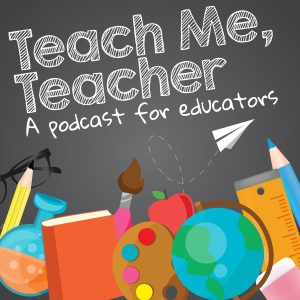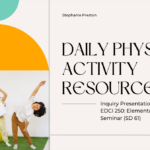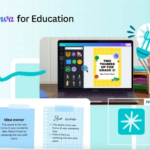Over Thanksgiving weekend, I had a wonderful time exploring, cooking, and spending quality family time. If you’d like to hear about the adventure I went on, check out this post. During this experience, with every few steps I took on the mountain there was another thing that I was thankful for in my life. A lot of which is quite personal and I’d rather just keep them to myself. So instead, for this post, I decided to take another route. As an aspiring teacher, one thing I am thankful for is the abundance of resources that are available to me. In the course 336, we were to find a variety of resources through non-traditional means (social media, youtube, blogs, etc.). I came across a podcast that grabbed me called “Teach Me Teacher”. They are informational and engaging and interview a wide variety of guests about any and all topics related to education.

Episode #195 “Mindfulness and Speech-Language Pathology with Rachel Musial”
I decided to listen and write about this episode because why not? Mindfulness is a great practice to bring into the classroom as it has so many benefits and since working as an Educational Assistant, I have been very interested in speech pathology. Rachel Musial is a Speech-Language Pathologist, in the United States, who helps kids with language and communication. Musial defines her job description as focusing on communication, confidence and connections. She gives tools to her “kiddos” so that they can become more independent and confident in communicating how they feel. Musial started out working in schools but had to transition into home-health because she couldn’t make ends meet. When Covid hit, she had to get creative and make another transition, so she took her career to Instagram. At first, Musial began posting about early intervention but it has now evolved into an informational page about mental health and mindfulness for educators to use themselves as well as for them to bring into their classrooms.
Mindfulness is the practice of focusing on the now. Slowing down and being in the moment instead of being trapped in your mind, worrying about the future or analyzing the past. Mindfulness is proactive, not reactive. This means that we need to check in with ourselves and talk about how our bodies feel in the moment. When practiced in a group setting (such as in a class), mindfulness combines all of our collective energy and spreads it across the same field. A great tip, that’s discussed in this episode, was to take a moment before a lesson to get everyone on the same page. You can do this by getting everyone in your class to stand up, close their eyes, and, together, say something like “Our purpose is to learn and support each other”. Doing this can make your students more present in the lesson and yourself as an educator more present in what you’re teaching.
“…due to consistent uncertainty (because of covid) the world has come to a collective awakening for ways to accept the present moment with gratitude and actually be there”.
Rachel Musial




carasartorio
October 16, 2022 — 12:24 pm
Hi Steph,
Love your post on mindfulness. Taking a few minutes to practice mindfulness when I am feeling anxious is so helpful, and would definitely benefit our students. One classroom I worked in put this into practice. Every day after recess the class would close their eyes while the teacher hit a chime. The students would all sit quietly and listen to the chime until they could not hear it anymore. This settled the students and got them ready for the next lesson.
I’m curious in what ways do you want to teach and incorporate mindfulness in your future classroom?
stephaniepreston
October 16, 2022 — 12:32 pm
Thanks Cara! That is a very thoughtful question. Quite honestly, I’m not too sure as I believe it depends on the energy of the class. I love the idea of the chime! I would like to incorporate a mantra of some kind. I feel that this would make them present and warm up students’ voices and make them more comfortable when asking or answering questions in class.
Joanna Lake
October 17, 2022 — 7:50 am
Thank you for including this resource, Stephanie.
The mindfulness app “Calm” used to be free for all educators. It is a wonderful way to bring in moments of meditation into the classroom, and for your own practice.
hannaguiney
October 18, 2022 — 5:10 pm
Hey Steph,
I agree that taking moments to practice mindfulness allows us to consider what we are thankful for. For my free-inquiry I am practicing mindfulness by going on hikes every weekend to allow time for myself to reflect on different parts of my life. Thank you for providing resources from Rachel Musial, I will definitely be checking her out online. Her thoughts on how to practice mindfulness in the classroom offered myself a lot of insight. If you feel comfortable answering, I am wondering what practicing mindfulness looks like for yourself?
stephaniepreston
October 18, 2022 — 5:26 pm
Hi Hanna, Thank you for asking! Mindfulness is about taking the time to be present and when I feel the most present is when I’m climbing. Especially when I climb outside. I feel connected to my body and mind and really need to access my spacial awareness in order to navigate the space that I’m in. When I’m climbing outside, I feel very connected to my surroundings. The feeling of the rock, the fresh air and being in good company makes me feel whole. Besides this, I practice mindfulness when hiking and going on early morning or evening strolls. I have also done breath workshops with Jessica Beloved (instagram is @beloved.alchemy). If you’re interested in mindfulness, definitely check her out! Her workshops are amazing and she shares a lot about her practice online.